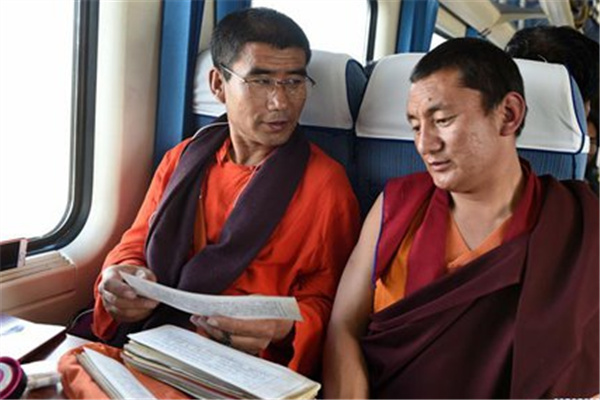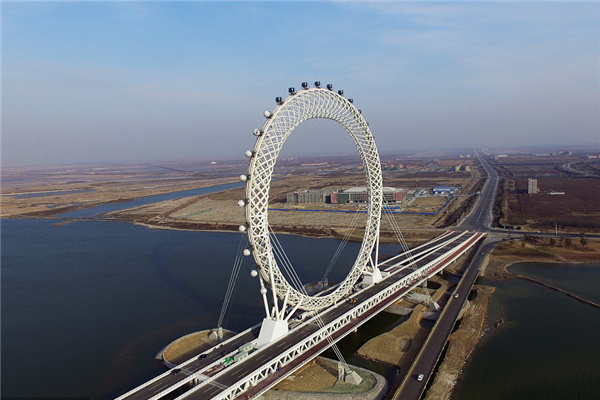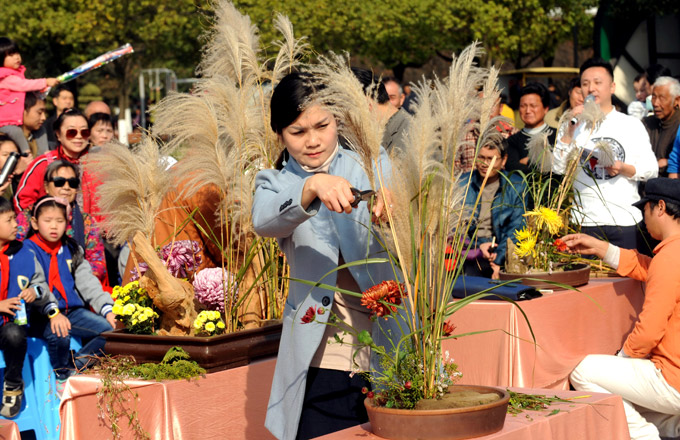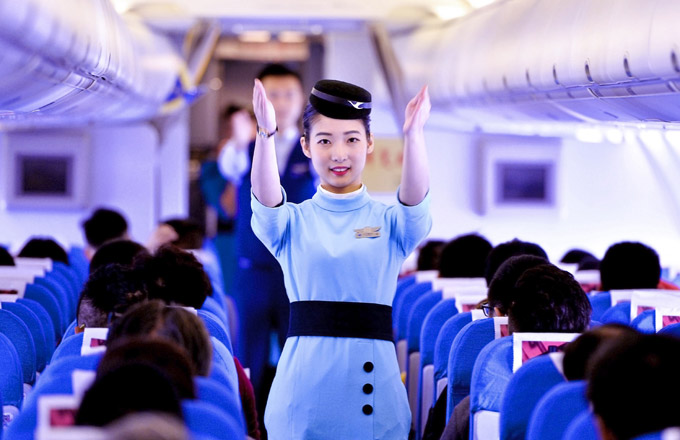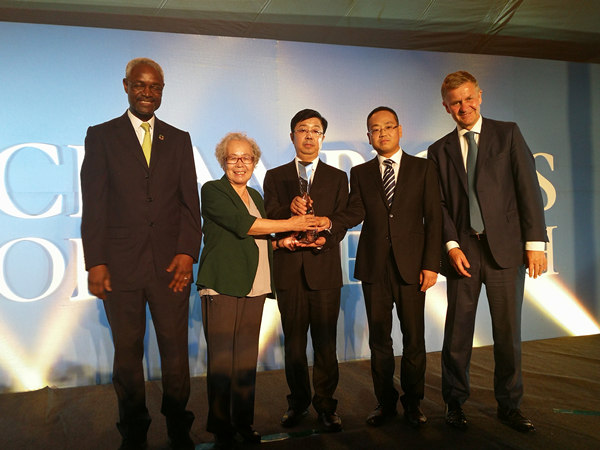

The big screen version of the Chinese cartoon Pleasant Goat and Big Big Wolf is running second only to Kung Fu Panda in box office takings for animated films in China.
The 6 million-yuan surprise hit grossed more than 90 million yuan in its first month, 30 million yuan of which came from its opening weekend in January.
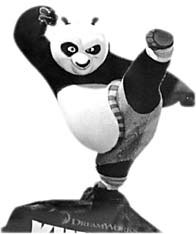
What the movie lacks in terms of plot and hi-tech special effects, it makes up for with its simple tale of a battle of wits between a herd of goats and a pair of wolves.
It was also boosted by the huge number of fans the television series it is based on attracted. A total of 500 episodes have been shown on nearly 50 TV stations over the past three years.
Speaking at the 5th China International Cartoon and Animation Festival in Hangzhou, Zhejiang province, Liu Yong, operations director of Shanghai Media Group (SMG), one of the producers of the animation, also praised the strong marketing campaign, which included organizing parties for children at cinemas.
Before the screening, SMG and its partner, Guangzhou Creative Power Entertaining, also sent promotional New Year cards to kindergarten children and forked out for a big advertising campaign across TV, radio, newspapers, websites and other media throughout the country.
They also teamed up with fast food chains such as KFC to send cuddly toys made in the image of leading characters from the film, a method often used when promoting children's films in the West.
Their efforts clearly paid off. Five-year-old Zhang Yisu said at the animation festival that she watched the film twice with her parents.
Plans are now afoot for a sequel to be released during the next school winter vacation, according to Liu Yong.
Zhong Luming, editor of Animation and Comic Weekly, predicted the follow-up could make between 130 and 150 million yuan.
Xie Kunzhe, general manager of Guangdong Alpha Animation and Culture Co Ltd's brand department, agreed but added the sequel must pay attention to detail. Otherwise, he said, it might earn only 30 to 50 million yuan.
It took the producers of Pleasant Goat one year to bring the film to audiences, in contrast with the five years spent on research and planning for Kung Fu Panda.
The success of Pleasant Goat is a shot in the arm for the domestic animation industry. However, Jin Delong, deputy editor-in-chief of the State Administration of Radio, Film and Television (SARFT), issued a note of caution. "China's animation producers still have a long way to go before they can catch up with their foreign rivals in design, production and promotion," he said.
Zhu Yuqi, general manager of a Fujian-based animation company, commented: "Although the content of Pleasant Goat is not as good as its foreign rivals, it is the best Chinese animated film currently out, so children accept it."
He is working and re-working an animation film script telling the story of Matsu, the goddess of the sea who protects fishermen and sailors, in an attempt to emulate the success of Kung Fu Panda and Pleasant Goat.
Mark Osborne, co-director of Kung Fu Panda, attended the animation festival, where he discussed the determination required to make an animated film.
Zhu Yuqi and fellow up-and-coming animator Wu Zheng paid close attention. Wu, a 26-year-old playwright who has been unemployed for more than six months, said: "There is a rosy future for China's animation industry which will belong to us young animators."
Last year Wu had to quit his job at a Shanghai-based animation company when his boss, like many others in the business, decided to work for US and Japanese clients instead of supporting domestic content.
In order to boost the domestic animation business, the Chinese government has adopted a series of helpful policies. In April 2004, SARFT released a policy document stating that domestically produced animation should make up no less than 60 percent of all animated programs aired on Chinese TV stations.
Two years later it enacted another regulation banning the airing of overseas animation on China's domestic channels between 5 and 8 pm - the peak viewing time for schoolchildren.
In February last year the ban was extended to 9 pm, with the minimum domestic production requirement lifted to 70 percent of total output.
"In just a few years, both the quantity and quality of domestic animation has improved greatly," said Jin Delong.
Total domestic animation output reached 130,000 minutes in 2008, up from 20,000 minutes in 2004. In addition, following the establishment of the first national animation production center in Shanghai in 2004, 78 other centers have been set up. Animation channels have increased from the three launched in 2004 to more than 30 today and China now has more than 5,600 animation companies.
"Ninety percent of the animation companies are small workshops," said Lin Yuan, president of Aixun International Animation Training Agency. "They started developing original content but later on started doing animation for foreign firms to make money." Foreign animators have long used Chinese workers as a source of cheap labor.
Zhu's company, which has fewer than 20 staff, does design work for domestic enterprises to make money to support his Matsu story-writing.
Animation is expensive, with costs reaching upwards of 10,000 yuan a minute.
"Small companies are barely able to last long enough to enjoy the preferential policies of the central government and those of local governments, such as the 2,000 yuan a minute bonus awarded if one of their cartoons is broadcast by CCTV," said Anna Sze, general manager of Momo King Limited, a Fujian-based animation company.
Bigger animation companies have a better chance because they have more capital with which to support the creative arm.
"The ratio between our overseas work and original programming is one to one," said Jiang Toon Animation Chairwoman Zhu Youlan, one of the largest animation firms in China. "We are doing this work to be able to pursue our original animation dreams."
Due to the ban on imported animation airing in prime time, the channels' needs for domestic cartoons exceeds 400,000 minutes a year.
Total domestic animation output reached 130,000 minutes in 2008, up from 81,000 minutes in 2007 and 42,000 minutes in 2006.
Several companies expanded as a result of the demand but, according to Ouyang Yibing, vice-chairman of the China Animation Association, that was not necessarily a good thing.
"Many companies do not have the potential to fully explore the market or enough capital to support their productions and are not making valuable or interesting programs," he said.
A recent survey, conducted by Sina.com, found that 51.9 percent of 1,100 respondents preferred foreign animations, 23.5 percent favored domestic programs, and the remainder said it depended on the content.
Sixty percent of respondents between the ages of 10 and 30 insisted they preferred foreign animations, demonstrating that foreign cartoons still dominate the Chinese market.
Questions are being asked why Kung Fu Panda, with its obvious Chinese themes and appeal to the domestic market, came to be made by the West.
With a population of 367 million people under the age of 18, it's a question many want answered.
SARFT stipulated in 2004 that China's animation industry's earnings should be at least 1 percent of the nation's gross domestic product after an initial 10 years of development. This would create a market worth more than 200 billion yuan. The industry's total output was only 20 billion yuan last year.
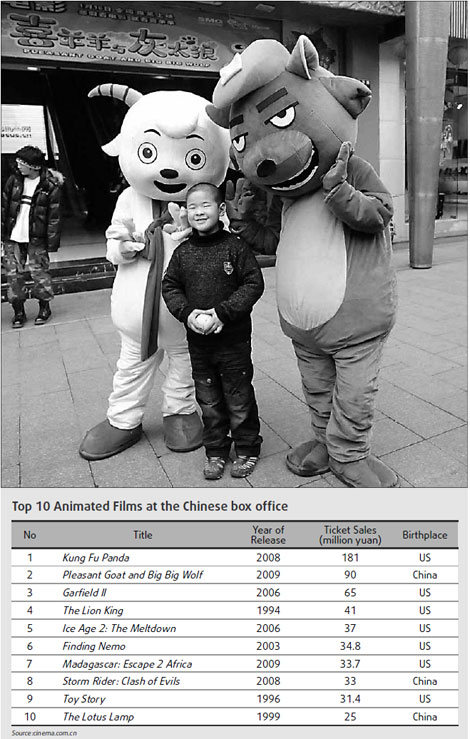
(China Daily 05/18/2009 page9)

